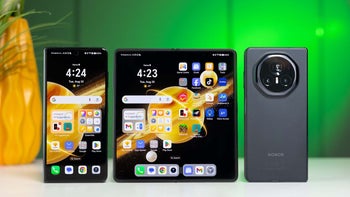If you can play LEGO, you can create Android apps with a new software from Google

Have you ever had a great idea for an app, but are too lazy/artistic/coding-gives-me-the-hiccups to learn any developer programming language? Fret not, Google has you covered. In the spirit of its “Do no evil” motto, the search giant has taken on sabbatical an MIT computer scientist to lead the Google App Inventor project. Harold Abelson has been a leading proponent of making science research and knowledge in general free and open to the public, which makes him perfectly suited for expanding the openness of the Android platform.
The goal from the onset has been to engage smartphone users, and turn them from observers of the hectic pace with which the industry is developing, to engaged creators of content for their Android handsets. Google App Inventor is aiming to let folks who don't want to spend months or years studying programming languages, make their own Android apps that no one else might use, but would make life easier for this particular individual.
The web-based software has been tested on different target groups, including high school girls - the least geeky people on the planet – and the ease of use appeared promising. App creation is as simple as dragging together code wrapped as images to make a newly minted app do simple tasks like send a text message to someone under certain circumstances. The pieces of the coding puzzle also allow you to use the phone's hardware such as accelerometer sensors, in order to detect certain positions, and take action accordingly.
Tinkering around with your computer, playing or creating simple games of the whac-a-mole type for example, which you can do with Google App Inventor, is how a lot of users got into IT in the first place. Google hopes to bring this experience to Android application development, which might eventually attract even more “developers” to Android.
This open approach to software creation's main virtue is that it opens the floodgates of people's imagination, and widens the base for content creation. It is a simple logic that might start a quiet revolution in the way people view their all-in-one gadget, the smartphone. Now, if only Google has been testing this with soccer moms and achieved satisfactory results, consider us sold to the idea.
You can have a first look and sign up for the service here (requires a Gmail address).
source: NYTimes via Textually
The goal from the onset has been to engage smartphone users, and turn them from observers of the hectic pace with which the industry is developing, to engaged creators of content for their Android handsets. Google App Inventor is aiming to let folks who don't want to spend months or years studying programming languages, make their own Android apps that no one else might use, but would make life easier for this particular individual.
The web-based software has been tested on different target groups, including high school girls - the least geeky people on the planet – and the ease of use appeared promising. App creation is as simple as dragging together code wrapped as images to make a newly minted app do simple tasks like send a text message to someone under certain circumstances. The pieces of the coding puzzle also allow you to use the phone's hardware such as accelerometer sensors, in order to detect certain positions, and take action accordingly.
Tinkering around with your computer, playing or creating simple games of the whac-a-mole type for example, which you can do with Google App Inventor, is how a lot of users got into IT in the first place. Google hopes to bring this experience to Android application development, which might eventually attract even more “developers” to Android.
This open approach to software creation's main virtue is that it opens the floodgates of people's imagination, and widens the base for content creation. It is a simple logic that might start a quiet revolution in the way people view their all-in-one gadget, the smartphone. Now, if only Google has been testing this with soccer moms and achieved satisfactory results, consider us sold to the idea.
You can have a first look and sign up for the service here (requires a Gmail address).
source: NYTimes via Textually













Things that are NOT allowed: